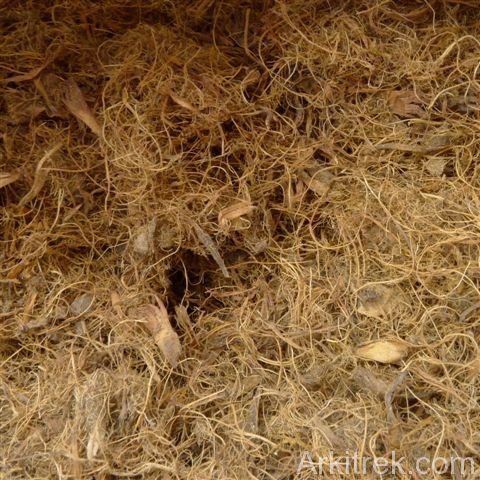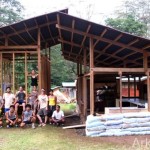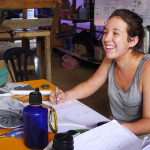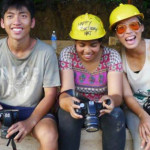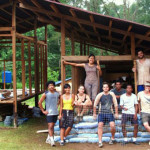Malua Base Camp
An Arkitrek Camp design-build program has just kicked off at Malua Base Camp near the Danum Valley Conservation Area in Sabah. This project aims to develop and test natural building materials to be used later in the construction of a scientific research station for the SAFE Project. Camp participants will test lime:natural fibre composite concrete and earth-bag walling as suitable natural building materials.
Stuffing and Stacking
Earth bags will be filled on site as a response to the challenge of transporting construction materials to a remote site. The team will sample soils from the area, blending them if necessary to achieve the correct mix and testing techniques for stuffing and stacking the earth-bags.
Blending and Casting
Building lime (Calcium Hydroxide), cement and sand will be blended with oil-palm fruit fibres to create a lightweight, low carbon, thermally insulating concrete. Fibres will come from a nearby oil-palm mill, ready processed and almost inexhaustible in supply.
Follow the progress of the participants on our Arkitrek Camp Facebook Page
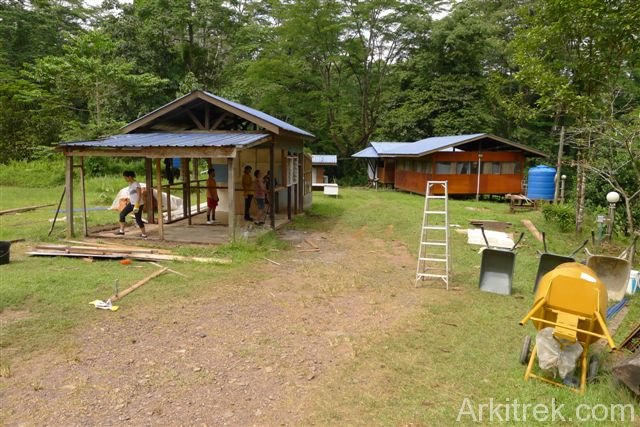
Malua project site showing the laboratory building on the left
Prototyping
These innovative materials are being tested on the renovation of a small field laboratory for the Sabah Biodiversity Experiment. A laboratory is an ideal building type. It needs a clean, dry and comfortable internal environment.
Earth bags provide thermal mass, which if kept shaded can passively (without air-con) regulate the internal temperature of a building at around 27-29ºC. When combined with good natural ventilation this is significantly cooler than daytime external temperatures which peak at around 35ºC.
An major issue on the Malua site is the creepy crawlies that live in the cavities of traditional framed construction. Monolithic earth-bag or lime:natural fibre composite construction has no cavities for those bugs to hide in.
We have a theory that the hgroscopic (soaking up water) nature of earth-bags and lime:natural fibre conmposites will also help to passively regulate the internal temperature and humidity. During cooler wetter times (rain storms and at night) the building fabric will absorb moisture from the atmosphere. During hotter, dryer times (during the day when the sun is out) the material will release moisture helping to cool by evaporation.
Of course we’re not at all sure about all of this and the potential for this laboratory building to be itself a laboratory is not lost on us. We we plan to monitor the building after completion to see how it performs.

Early design and ideas workshop at Kipouvo Homestay in Kota Kinabalu


